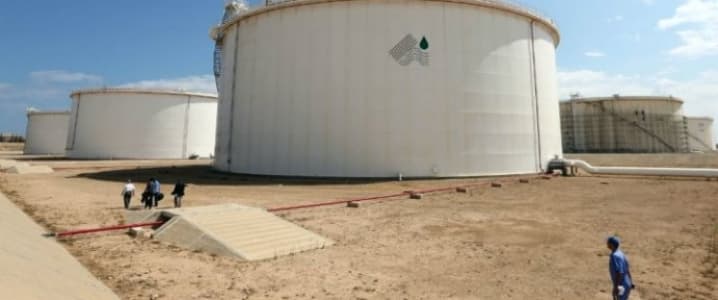Oil is getting tonked for a second consecutive day, as prices have run into resistance at the top of their trading range, sending them staggering lower once more. With record net-long speculative positioning, a couple of days of selling could really ignite a bout of profit-taking (especially with the prospect of another bearish inventory report tomorrow). Hark, here are five things to consider in oil markets today.
1) An article today highlights how the East Coast last year received the most crude imports since 2013. Our ClipperData show this trend holding in January, with waterborne imports reaching their highest level since last July.
Waterborne crude imports last year to the U.S. East Coast were 36 percent higher than in the year prior; the biggest increases came through from Canada, Nigeria, Angola, Venezuela and Iraq, while Mexican crude saw the biggest drop, shrinking by a factor of five to just 15,000 bpd.
East Coast refiners imported crude grades from 20 different countries last year; over half of that, some 440,000 bpd, was light crude, continuing to displace domestic crude by rail from Bakken. Only 99,000 bpd of waterborne imports was heavy crude.
(Click to enlarge)
2) Our ClipperData below show that LPG exports continue to be robust from the U.S. Gulf, as the region establishes itself as a key global supply hub. As the chart below illustrates, the majority of exports are coming out of three terminals: Enterprise at Houston, Targa Resources at Houston, and Sunoco at Nederland.
Propane is the primary export, although butane has risen in prominence in the last year. With Asia the key destination for U.S. LPG exports, the widening of the Panama canal has dramatically cut the time it takes U.S. vessels to get to Asia - from ~30 days to ~20 - making them all the more competitive.
(Click to enlarge)
3) BP has released its latest quarterly results, showing that it has made a second consecutive annual loss amid ongoing costs relating to the Deepwater Horizon disaster in 2010 (payments last year = $7.1 billion).
BP also said it needs an oil price of $60/bbl to break-even - after ramping up debt levels last year to maintain its dividend, fund spending and cover the aforementioned cuts.

4) Statoil is the leading partner in a joint venture called the Johan Sverdrup development, a giant project offshore Norway. The first phase of the project is 40 percent complete, and its break-even price has just been adjusted lower to below $20/bbl. The second phase is expected to have a break-even below $30/bbl, meaning the whole project has a break-even of ~$25/bbl.
Statoil has just released its latest quarterly earnings. The company estimates its average break-even price for new projects by 2022 has fallen sharply to $27/bbl, down from $41/bbl this time last year.
Even though Norwegian oil supply is said to have risen by 50,000 bpd last year to average 2mn bpd - boosted by new production from the Goliat field, as well as increasing output from the Edvard Grieg field - estimates suggest that Norwegian production should drop this year, despite the start of the Ivar Aasen field in December, which is set to contribute 35,000 bpd in 2017.

5) My latest feature on the Texas Standard highlights some of the key themes from the latest BP Energy Outlook to 2035. The interview and related article can be accessed here. Related: Putin’s Tough Choice: China Or The West
As regular readers know already, I really enjoy longer-term outlooks - not for their potential accuracy (because they are on a hiding to nothing), but for their thought-provoking nature, and for their ability to raise awareness about broader trends.
The below chart relates to one of the key takeaways I referenced in yesterday's feature. Renewables, combined with nuclear, are set to account for a half of all energy supply growth to 2035. Europe is not only currently leading the charge in terms of renewables in the power generation mix, but is expected to still do so over the next twenty years.
ADVERTISEMENT
Renewables are expected to account for 40 percent of Europe's generation mix by 2035, while both the U.S. and the world are expected to closer to half of that.
(Click to enlarge)
By Matt Smith
More Top Reads From Oilprice.com:
- Electric Vehicles Will Be A Major Oil Price Driver In The Future
- This Nation Just Created A New Corporate Superpower In Oil & Gas
- Oil Markets On A Knife Edge Despite 91% OPEC Compliance





















